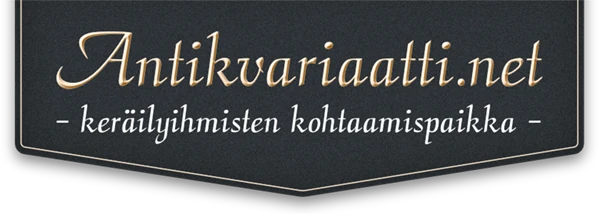Hakutulokset (39)
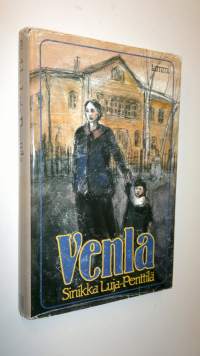
Venla
Sinikka Luja-Penttilä, Tammi, 1983
Hinta: 3,50 €
Lisää ostoskoriin
Lisää ostoskoriin
(Korissa 0 kpl)
(Korissa 0 kpl)
Kaikki tuotteet
Korissa (0)
Korissa (0)
Tyyppi:
Kirjat
Kunto:
K3 (Hyvä)
Myyjä:
Saatavilla:
1
Nidonta:
Sidottu (kansipaperit)
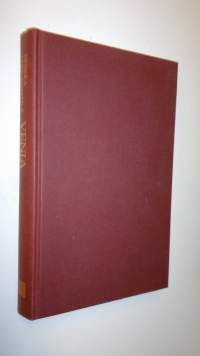
Venla
Sinikka Luja-Penttilä, Tammi, 1983
Hinta: 3,00 €
Lisää ostoskoriin
Lisää ostoskoriin
(Korissa 0 kpl)
(Korissa 0 kpl)
Kaikki tuotteet
Korissa (0)
Korissa (0)
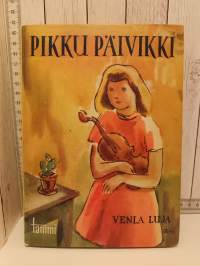
Pikku Päivikki
Luja Venla, Tammi, 1944
Tammen nuorisonkirjoja n:o 4
Hinta: 5,00 €
Lisää ostoskoriin
Lisää ostoskoriin
(Korissa 0 kpl)
(Korissa 0 kpl)
Kaikki tuotteet
Korissa (0)
Korissa (0)
Tyyppi:
Kirjat
Kunto:
K3 (Hyvä)
Myyjä:
Saatavilla:
1
Nidonta:
Kuvitettu kovakantinen
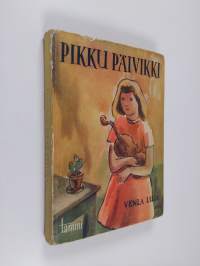
Pikku Päivikki
Venla Luja, Tammi, 1944
Merkinnät: omistajamerkintäSarja: Tammen nuorisonkirjoja 4
Hinta: 7,50 €
Lisää ostoskoriin
Lisää ostoskoriin
(Korissa 0 kpl)
(Korissa 0 kpl)
Kaikki tuotteet
Korissa (0)
Korissa (0)
Tyyppi:
Kirjat
Kunto:
K3 (Hyvä)
Myyjä:
Saatavilla:
1
Nidonta:
Kuvitettu kovakantinen
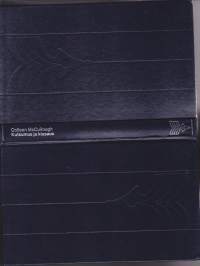
Kutsumus ja kiusaus, 1982. Okalintujen tekijän romaani sijoittuu eksoottiselle Tyynen valtameren saarelle vuoden 1945 loppupuolella.
McCullough Colleen, SSKK, 1982
-Sotilastukikohdan sairaalan erillisosastolla hoidetaan viidakko taisteluissa hermonsa menettäneitä sotilaita. Lempeä mutta luja Honour Langtry vastaa yksin osastosta ja sen hoidokkiviisikosta. Uuden ja samalla viimeisen potilaan saapuminen osastolle käynnistää saarella jännittävien tapahtumien sarjan
Hinta: 2,00 €
Lisää ostoskoriin
Lisää ostoskoriin
(Korissa 0 kpl)
(Korissa 0 kpl)
Kaikki tuotteet
Korissa (0)
Korissa (0)
Tyyppi:
Kirjat
Kunto:
K3 (Hyvä)
Saatavilla:
1
Nidonta:
Sidottu (kovak.)
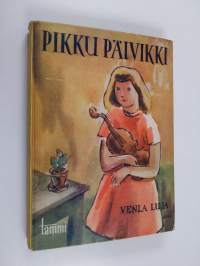
Pikku Päivikki
Venla Luja, Tammi, 1944
Sarja: Tammen nuorisonkirjoja 4
Hinta: 7,50 €
Lisää ostoskoriin
Lisää ostoskoriin
(Korissa 0 kpl)
(Korissa 0 kpl)
Kaikki tuotteet
Korissa (0)
Korissa (0)
Tyyppi:
Kirjat
Kunto:
K3 (Hyvä)
Myyjä:
Saatavilla:
1
Nidonta:
Kuvitettu kovakantinen
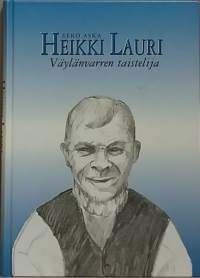
Heikki Lauri - Väylänvarren taistelija. (Muistelmat, uskonto)
Eero Aska, Pellon seurakunta, 1994
Kotiseutunsa historiaan perehtynyt kirjoittaja kuvaa teoksessaan Heikki Lauria ja hänen aikaansa (1828-1920). Lauri oli aikansa patriarkka ja luja Väylänvarren taistelija. Niinpä hänen vaikutuksensa Pohjolan kristillisyydessä oli todella merkittävä. Kuvitettu. Dimensiot 22 ¤ 15 cm.
Hinta: 15,00 €
Lisää ostoskoriin
Lisää ostoskoriin
(Korissa 0 kpl)
(Korissa 0 kpl)
Kaikki tuotteet
Korissa (0)
Korissa (0)
Tyyppi:
Kirjat
Kunto:
K4 (Erinomainen)
Myyjä:
Saatavilla:
1
Nidonta:
Kuvitettu kovakantinen
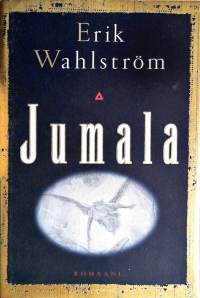
Jumala
wahlström erik, Otava, 2006
Jumala on hillittömän hauska romaani-teologiaan lujasti ankkuroitu-Jumalasta ja hänen joukostaan,ja siitä kuinka hänen kiivas luonteenlaatunsa ja luja tahtonsa ovat eri aikoina vaikuttaneet maailmaan.
Hinta: 7,00 €
Lisää ostoskoriin
Lisää ostoskoriin
(Korissa 0 kpl)
(Korissa 0 kpl)
Kaikki tuotteet
Korissa (0)
Korissa (0)
Tyyppi:
Kirjat
Kunto:
K3 (Hyvä)
Myyjä:
Saatavilla:
1
Nidonta:
Sidottu (kansipaperit)
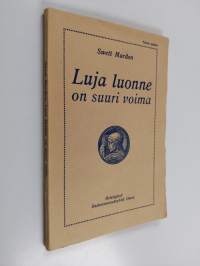
Luja luonne on suuri voima
O. Swett Marden, Otava, 1918
Muu(t) tekijä(t): Helmi KrohnAsiasanat: temperamentti
Hinta: 10,00 €
Lisää ostoskoriin
Lisää ostoskoriin
(Korissa 0 kpl)
(Korissa 0 kpl)
Kaikki tuotteet
Korissa (0)
Korissa (0)
Tyyppi:
Kirjat
Kunto:
K4 (Erinomainen)
Myyjä:
Saatavilla:
1
Nidonta:
Sidottu (kovak.)
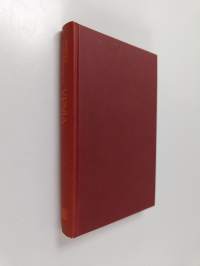
Venla (signeerattu, tekijän omiste)
Sinikka Luja-Penttilä, Tammi, 1983
Hinta: 8,00 €
Lisää ostoskoriin
Lisää ostoskoriin
(Korissa 0 kpl)
(Korissa 0 kpl)
Kaikki tuotteet
Korissa (0)
Korissa (0)
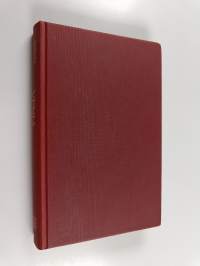
Venla (signeerattu, tekijän omiste)
Sinikka Luja-Penttilä, Tammi, 1983
Merkinnät: omistajamerkintä leikattu pois etulehden ylälaidasta
Hinta: 7,00 €
Lisää ostoskoriin
Lisää ostoskoriin
(Korissa 0 kpl)
(Korissa 0 kpl)
Kaikki tuotteet
Korissa (0)
Korissa (0)
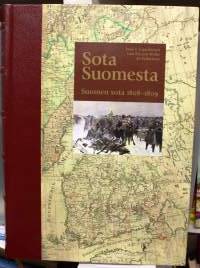
Sota Suomesta - Suomen sota 1808 - 1809. Upea, isokokoinen historiateos. Hieno kuvitus ja Venäjän arkistoista löydetty uusi karttamateriaali.
Tyyppi:
Kirjat
Kunto:
K3 (Hyvä)
Saatavilla:
1
Nidonta:
Kuvitettu kovakantinen
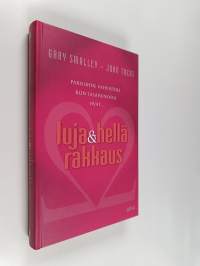
Luja ja hellä rakkaus
Gary Smalley, Päivä, 2009
Muu(t) tekijä(t): Mari Vilkanen, John TrentAlkuteos: The two sides of loveAsiasanat: eläimet, ihmissuhteet, parisuhde, luonteenpiirteet, rakkaus, kristillinen etiikka, leijona, vertailu, majavat, saukko, kultainennoutaja
Hinta: 12,00 €
Lisää ostoskoriin
Lisää ostoskoriin
(Korissa 0 kpl)
(Korissa 0 kpl)
Kaikki tuotteet
Korissa (0)
Korissa (0)
Tyyppi:
Kirjat
Kunto:
K4 (Erinomainen)
Myyjä:
Saatavilla:
1
Nidonta:
Kuvitettu kovakantinen
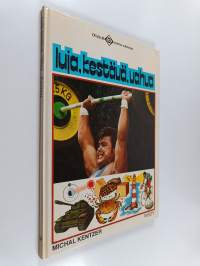
Luja, kestävä, vahva
Michal Kentzer, WSOY, 1979
Muu(t) tekijä(t): Pertti JotuniSarja: Oculus 9Alkuteos: Strength
Hinta: 5,00 €
Lisää ostoskoriin
Lisää ostoskoriin
(Korissa 0 kpl)
(Korissa 0 kpl)
Kaikki tuotteet
Korissa (0)
Korissa (0)
Tyyppi:
Kirjat
Kunto:
K3 (Hyvä)
Myyjä:
Saatavilla:
1
Nidonta:
Kuvitettu kovakantinen
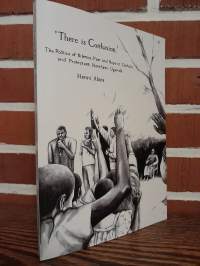
'There is Confusion.' - The Politics of Silence, Fear and Hope in Catholic and Protestant Northern Uganda
Tyyppi:
Kirjat
Kunto:
K3 (Hyvä)
Saatavilla:
1
Nidonta:
Nidottu (pehmeäk.)
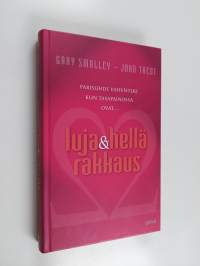
Luja ja hellä rakkaus
Gary Smalley, Päivä, 2009
Muu(t) tekijä(t): Mari Vilkanen, John TrentAlkuteos: The two sides of loveAsiasanat: eläimet, ihmissuhteet, parisuhde, luonteenpiirteet, rakkaus, kristillinen etiikka, leijona, vertailu, majavat, saukko, kultainennoutaja
Hinta: 11,00 €
Lisää ostoskoriin
Lisää ostoskoriin
(Korissa 0 kpl)
(Korissa 0 kpl)
Kaikki tuotteet
Korissa (0)
Korissa (0)
Tyyppi:
Kirjat
Kunto:
K3 (Hyvä)
Myyjä:
Saatavilla:
1
Nidonta:
Kuvitettu kovakantinen
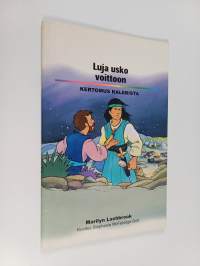
Luja usko voittoon : kertomus Kalebista
Marilyn Lashbrook, Päivä, 2001
Muu(t) tekijä(t): Stephanie McFetridge Britt, Päivi PerastoAlkuteos: Faith to win!Asiasanat: Raamatun henkilöt, raamatunkertomukset
Hinta: 4,00 €
Lisää ostoskoriin
Lisää ostoskoriin
(Korissa 0 kpl)
(Korissa 0 kpl)
Kaikki tuotteet
Korissa (0)
Korissa (0)
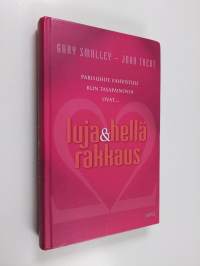
Luja ja hellä rakkaus
Gary Smalley, Päivä, 2009
Muu(t) tekijä(t): Mari Vilkanen, John TrentAlkuteos: The two sides of loveAsiasanat: eläimet, ihmissuhteet, parisuhde, luonteenpiirteet, rakkaus, kristillinen etiikka, leijona, vertailu, majavat, saukko, kultainennoutaja
Hinta: 11,00 €
Lisää ostoskoriin
Lisää ostoskoriin
(Korissa 0 kpl)
(Korissa 0 kpl)
Kaikki tuotteet
Korissa (0)
Korissa (0)
Tyyppi:
Kirjat
Kunto:
K3 (Hyvä)
Myyjä:
Saatavilla:
1
Nidonta:
Kuvitettu kovakantinen
